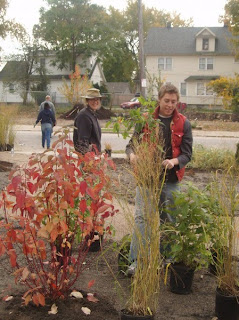For the latest installment of Calling All Creatives, I had to overcome some obstacles before I could write this post: a possible closed event and a snowstorm. TEDxCLE is an independently sponsored TED event which promised to bring together some of the most creative thinkers in the Cleveland-area on a late February day during a notoriously snowy winter here in Ohio.
When I first heard about the event, from where exactly I can’t remember, I knew wanted to write about it for Calling All Creatives. Well, that was the easy part. I then had the difficult task of getting a ticket to an event that was taking applications for attendees. Yes, you read that right. There was an online application form that needed to be filled out to see if you qualified for a ticket first. This puzzled me for months, because it did not include the time and/or price. Would I want to be accepted to something I could not attend nor afford?
Luckily, about a month before the event, I started following TEDxCLE on Twitter, where it was revealed that tickets would be going on sale to the general public. And guess what? The price was extremely reasonable and the time fit into my schedule.
Immediately after the announced ticket sale date and time, I bought my ticket. Lucky for me that I did, because the next day or so the event sold out. So with ticket in hand, I was ready for my TED experience.
Or so I thought. The morning of the event a snowstorm shut the city and every public school down in the area. I anxiously checked Twitter and to my surprise the event was still on. Now, I had to decide if I wanted to risk the icy roads and if the TED event was worth it. In the end, I made the last minute decision to go and haven’t regretted it since!
The event was held in a wonderfully restored theater. And the throngs of people proved that a little snow doesn’t scare Clevelanders away from a revolutionary event like TED.
Some of my favorite moments from the event included a presentation from Terry Schwartz of Pop Up City explaining how broken cities are like broken ceramics and the way to fix them involves making small repairs, which can be noticeable, since we will never fully restore them completely to their original state.
Also, Aaron LeMieux of Tremont Electric talking about alternative energy and his discovery of using kinetic energy as power was another highlight for me. He described how his idea was born during a hike on the Appalachian Trail, while he was still in college. He also discussed how it took him almost 10 years of creating prototypes to finally discover the best solution.
Finally, and probably my favorite presentation was by Danielle DeBoe the owner the boutique ROOM SERVICE and creator of Made in the 216, an event featuring local artisans. She highlighted the path to living a passionate life by demonstrating all the creative twists and turns she took along her own personal journey.
Please check out the rest of the presentations here. I promise you won’t be sorry and you’ll definitely feel inspired afterward.


